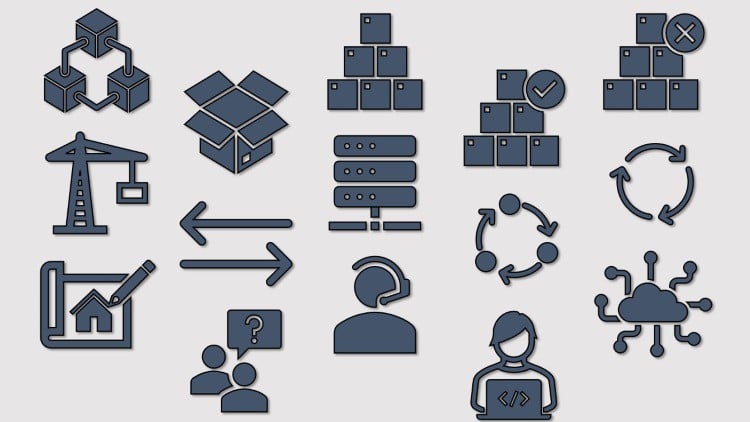
Architecture is an important engineering step in the design and creation of software
⏱️ Length: 8.4 total hours
⭐ 4.23/5 rating
👥 89,501 students
🔄 February 2022 update
Add-On Information:
Note➛ Make sure your 𝐔𝐝𝐞𝐦𝐲 cart has only this course you're going to enroll it now, Remove all other courses from the 𝐔𝐝𝐞𝐦𝐲 cart before Enrolling!
- Course Overview
- This course delves into the foundational principles and practical application of software architecture, positioning it as a critical engineering discipline in the development lifecycle. It provides a comprehensive understanding of how to design, document, and evolve robust and scalable software systems.
- You will embark on a journey from understanding the abstract concepts of architectural styles and patterns to the tangible creation and communication of complex software designs. The emphasis is on building architectures that are not only functional but also maintainable, adaptable, and align with business objectives.
- The February 2022 update ensures the content reflects current industry best practices and emerging trends in software engineering. With a substantial student base and a high rating, this course offers proven value for aspiring and practicing software engineers.
- Key Focus Areas
- Strategic Design Thinking: Explore how architectural decisions impact long-term project success, cost, and performance. Learn to balance technical excellence with practical constraints.
- System Decomposition and Integration: Understand the art of breaking down large, complex systems into manageable, cohesive components and defining the crucial interfaces and interactions between them.
- Architectural Quality Attributes: Master the principles of designing for key non-functional requirements such as performance, security, reliability, scalability, and maintainability.
- Evolutionary Architectures: Grasp the concept of designing architectures that can adapt and evolve over time to meet changing business needs and technological advancements without requiring complete rewrites.
- Communication and Documentation: Develop the ability to clearly and effectively communicate architectural visions and technical specifications to diverse stakeholders, including development teams, management, and clients.
- Architectural Trade-offs: Learn to analyze and navigate the inherent trade-offs involved in architectural decisions, understanding that no single solution is perfect for all situations.
- Domain-Driven Design (DDD) Concepts: Gain an introduction to how DDD principles can inform and shape software architecture for complex business domains.
- Requirements / Prerequisites
- Solid understanding of software development fundamentals, including programming concepts and basic data structures.
- Familiarity with common software development methodologies (e.g., Agile, Waterfall).
- Basic knowledge of system design principles.
- Access to a computer with internet connectivity.
- Skills Covered / Tools Used
- Architectural Pattern Identification: Recognizing and applying established architectural patterns (e.g., Microservices, Monolithic, Client-Server, Event-Driven) to solve specific problems.
- Diagramming and Modeling: Proficiency in creating clear and concise architectural diagrams using standard notations (e.g., UML, C4 model) to visualize system structure and behavior.
- Trade-off Analysis: Developing skills in evaluating different architectural choices based on a set of defined criteria and constraints.
- Requirements Engineering for Architecture: Translating business and functional requirements into architectural considerations and constraints.
- Technical Documentation: Crafting comprehensive architectural decision records (ADRs) and other documentation artifacts.
- Component Design: Understanding how to design individual software components with clear responsibilities and interfaces.
- System Integration Strategies: Learning about different approaches to connecting and orchestrating various software components and services.
- Benefits / Outcomes
- Enhanced Problem-Solving Abilities: Develop a more strategic approach to tackling complex software challenges by thinking at the architectural level.
- Improved System Quality: Design and build software that is more robust, scalable, maintainable, and secure.
- Career Advancement: Acquire skills highly valued by employers for roles such as Software Architect, Senior Developer, Technical Lead, and Solution Architect.
- Effective Communication: Articulate architectural decisions and visions with confidence and clarity to technical and non-technical audiences.
- Reduced Development Costs: By preventing costly design flaws early in the development cycle.
- Increased Project Success Rates: Contribute to projects that are delivered on time, within budget, and meet stakeholder expectations.
- Adaptability in a Changing Landscape: Equip yourself with the knowledge to design systems that can withstand the test of time and evolving technological trends.
- PROS
- Extensive Coverage: The course provides a broad yet deep understanding of software architecture suitable for a wide audience.
- High Student Engagement: A large number of students and a high rating indicate practical and valuable content.
- Current Information: The recent update ensures relevance in today’s fast-paced tech environment.
- Practical Applicability: Focuses on actionable principles and techniques that can be immediately applied.
- CONS
- Depth vs. Breadth Balance: While covering many areas, some advanced topics might require further specialized study.
Learning Tracks: English,IT & Software,Other IT & Software
Found It Free? Share It Fast!